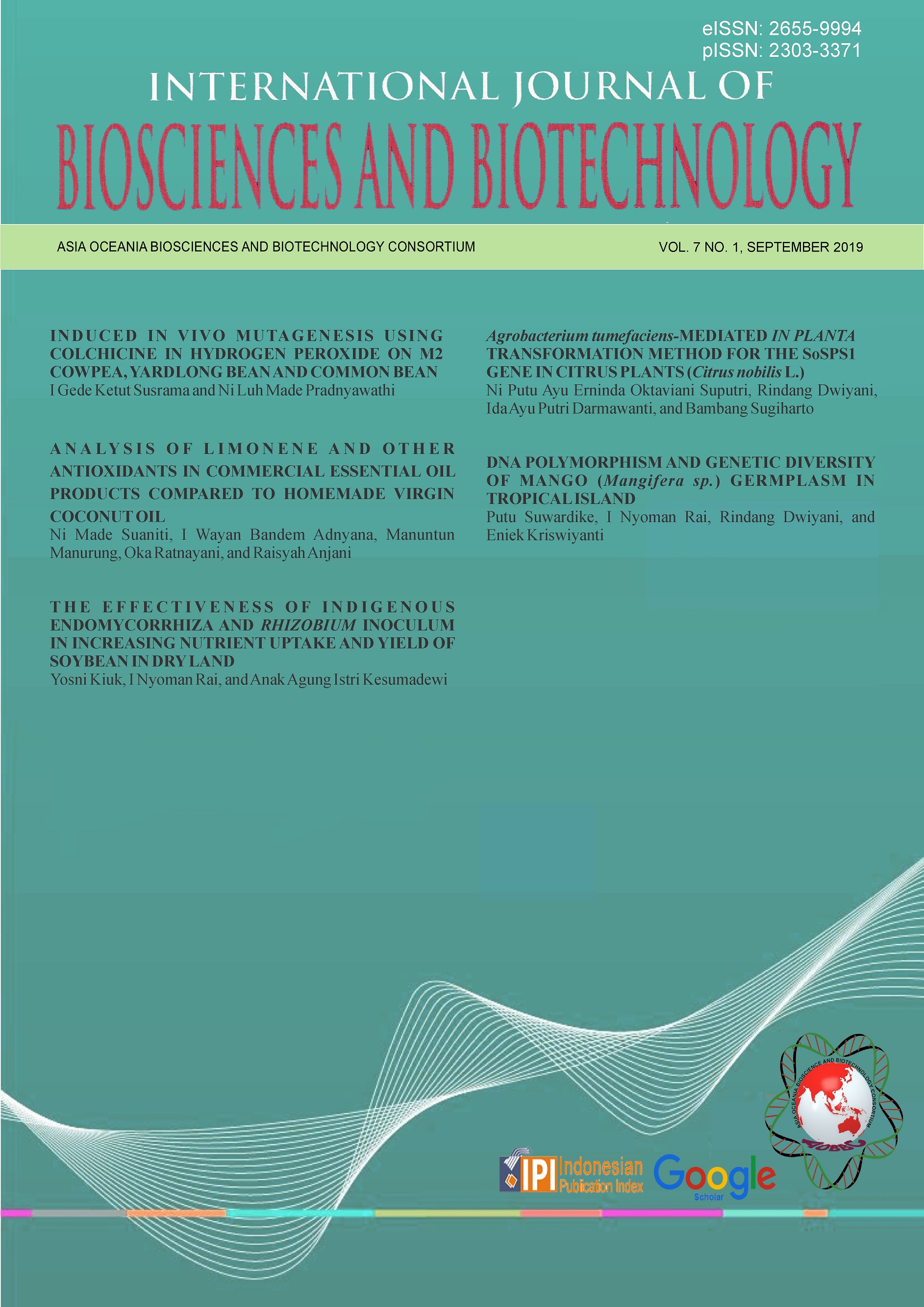Agrobacterium tumefaciens-MEDIATED IN PLANTA TRANSFORMATION METHOD FOR THE SoSPS1 GENE IN CITRUS PLANTS (Citrus nobilis L.)
Abstract
The SoSPS1 gene of sugar cane plants previously subjected to Agrobacterium tumefacienmediated cloning was to be transferred to citrus plants to increase metabolism of sucrose in plant. The T-DNA harbored the SoSPS1 gene under the control of the CaMV 35S promoter from the cauliflower mosaic virus and contained the NPTII gene (kanamycin resistance gene) as a selectable marker for transformant selection. Generally, gene transformation in plants is carried out by tissue culture. However, tissue culture has several disadvantages such as its being time-consuming, its sometimes resulting in somatic mutations and somaclonal variations, and the requirement of sterile conditions in the procedure of gene transfer. In planta transformation is a useful system for those plants that lack tissue culture and regeneration system. The main function of in planta transformation is to recover the advantages of tissue culture as an efficient, quick method, including its ability to produce a large number of transgenic plants and to accumulate a high concentration of total soluble protein in short time. There are two procedures of in planta transformation for the seeds of citrus plants, namely “prick and coat” and “seed tip-cutting and imbibition”. In the prick and coat method, seeds are pricked on their entire surfaces and smeared with a suspension of Agrobacterium tumefaciens. In the seed tip-cutting and imbibition method, on the other hand, seeds are cut at the tip and soaked in a suspension of Agrobacterium tumefaciens. The leaves derived from seeds treatment were taken as samples for DNA extraction and PCR using primers of the NPTII gene (Forward: 5’-GTCATCTCACCTTCCTCCTGCC-3’; Reverse: 5’-GTCGCTTGGTCGGTCATTTCG-3’). This research found that only the seed tip-cutting and imbibition plants amplified along the 550-bp band, while those of the prick and coat method did not. Additionally, the T-DNA was successfully integrated into the genome of the plants treated with the seed tip-cutting and imbibition method but not with the prick and coat.






